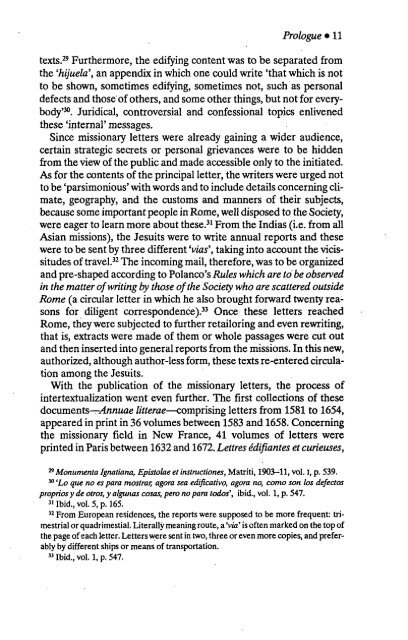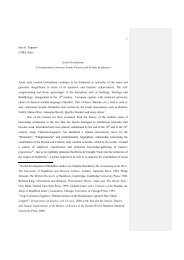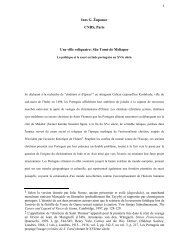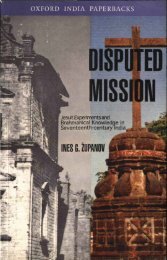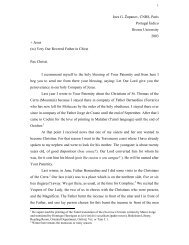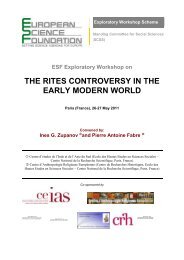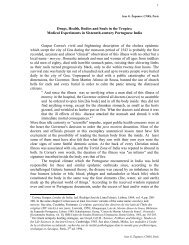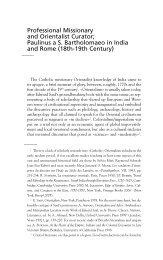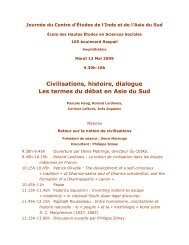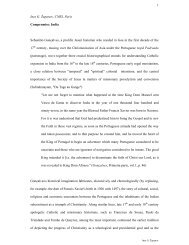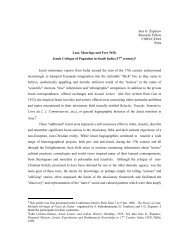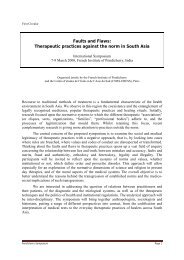INES G. ZUPANOV - Ines G. Županov
INES G. ZUPANOV - Ines G. Županov
INES G. ZUPANOV - Ines G. Županov
Create successful ePaper yourself
Turn your PDF publications into a flip-book with our unique Google optimized e-Paper software.
Prologue »11<br />
texts. 29 Furthermore, the edifying content was to be separated from<br />
the 'hijuela', an appendix in which one could write 'that which is not<br />
to be shown, sometimes edifying, sometimes not, such as personal<br />
defects and those of others, and some other things, but not for everybody'<br />
30 . Juridical, controversial and confessional topics enlivened<br />
these 'internal' messages.<br />
Since missionary letters were already gaining a wider audience,<br />
certain strategic secrets or personal grievances were to be hidden<br />
from the view of the public and made accessible only to the initiated.<br />
As for the contents of the principal letter, the writers were urged not<br />
to be 'parsimonious' with words and to include details concerning climate,<br />
geography, and the customs and manners of their subjects,<br />
because some important people in Rome, well disposed to the Society,<br />
were eager to learn more about these. 31 From the Indias (i.e. from all<br />
Asian missions), the Jesuits were to write annual reports and these<br />
were to be sent by three different 'vias', taking into account the vicissitudes<br />
of travel. 32 The incoming mail, therefore, was to be organized<br />
and pre-shaped according to Polanco's Rules which are to be observed<br />
in the matter of writing by those of the Society who are scattered outside<br />
Rome (a circular letter in which he also brought forward twenty reasons<br />
for diligent correspondence). 33 Once these letters reached<br />
Rome, they were subjected to further retailoring and even rewriting,<br />
that is, extracts were made of them or whole passages were cut out<br />
and then inserted into general reports from the missions. In this new,<br />
authorized, although author-less form, these texts re-entered circulation<br />
among the Jesuits.<br />
With the publication of the missionary letters, the process of<br />
intertextualization went even further. The first collections of these<br />
documents—.¿rtrtuae litterae—comprising letters from 1581 to 1654,<br />
appeared in print in 36 volumes between 1583 and 1658. Concerning<br />
the missionary field in New France, 41 volumes of letters were<br />
printed in Paris between 1632 and 1672. Lettres édifiantes et curieuses,<br />
29 Monumenta Ignatiana, Epistolae et instructiones, Matriti, 1903-11, vol. I, p. 539.<br />
30 'Lo que no es para mostrar, agora sea edificativo, agora no, como son los defectos<br />
proprios y de otros, y algunas cosas, pero no para todos', ibid., vol. l,p.547.<br />
31 Ibid., vol. 5, p. 165.<br />
î2 From European residences, the reports were supposed to be more frequent: trimestrial<br />
or quadrimestial. Literally meaning route, a 'via' is often marked on the top of<br />
the page of each letter. Letters were sent in two, three or even more copies, and preferably<br />
by different ships or means of transportation.<br />
33 Ibid., vol. 1, p. 547.


